Our home has been completely invaded by pumpkins–real, decorative, and crafted!
Here’s my daughter’s latest pumpkin project–a toilet paper roll and construction paper pumpkin that is a great paper-cutting activity.
Materials:
- toilet paper roll
- orange paint
- orange construction paper
- green chenille stem
- glue
- scissors
- pencil
- ruler
Directions:
1. Paint the toilet paper roll orange and let dry.
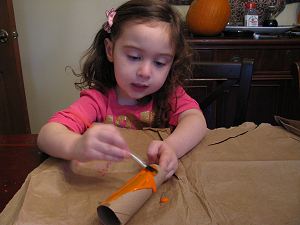
2. Take a piece of construction paper that is approximately twice as long as the toilet paper roll. Fold the construction paper in half and mark off lines, every 1/3 of an inch, from the folded edge up to approximately a half inch before the top. (Note: In the picture we initially did every inch but 1/3 or 1/2 inch works better.)
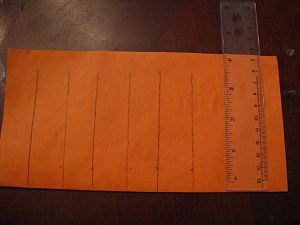
3. Cut along the lines, taking care not to cut all the way to the edge. You want the sections to remain joined, not be cut into separate strips.
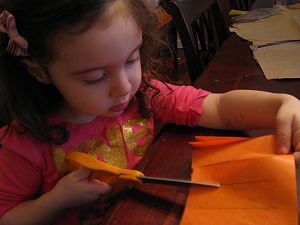
4. Unfold the edge of the paper and paste one end to the top of the toilet paper roll and the other end to the bottom.
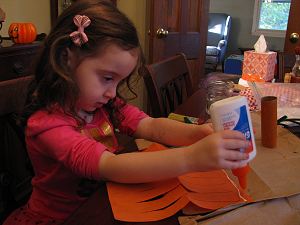
5. Using a scissor or a hole punch, pierce or punch two holes at the top of the toilet paper roll so you can thread your chenille stem through.
6. Thread a green chenille stem through the top of the pumpkin so about one quarter is sticking out one side and three quarters of the chenille stem is sticking out the other. Twist the two ends together, forming a stem.
7. Then bend the pipe cleaner back over the already twisted part and twist together again.
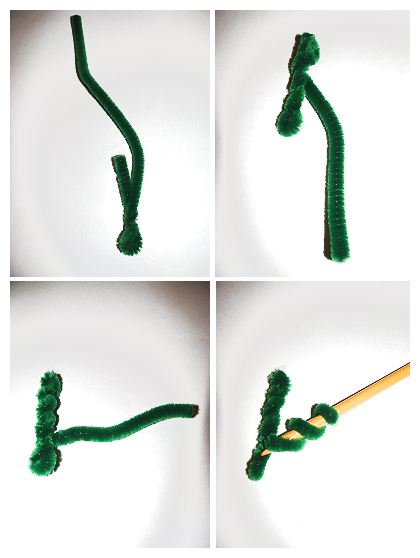
8. You should now have the remaining quarter of the chenille stem free near the base of the “stem”. Twist this around a pencil to form a curvy vine.
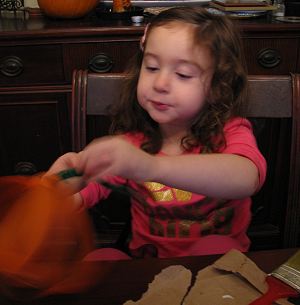
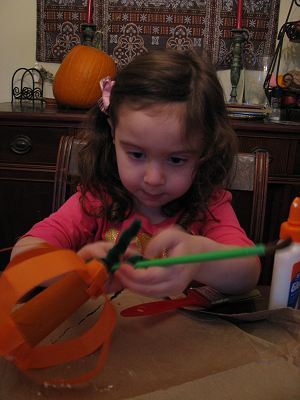
9. Add paste along the top and paste the top part of paper strips (the pumpkin sections) up to make a more rounded shape. Repeat along the bottom.
Picture Books About Pumpkins – Toddlers
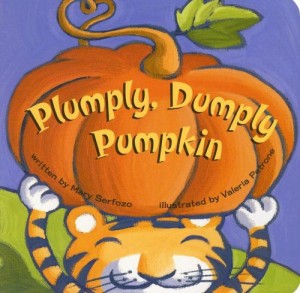
Plumply, Dumply Pumpkin, by Mary Serfozo: Toddlers will love the language play and the adorable cartoon-ish illustrations and older children will learn from the more advanced vocabulary: “Peter’s looking for a pumpkin, a perfect plumply, dumply pumpkin. Not a lumpy, bumpy pumpkin. Not a stumpy, grumpy pumpkin, but a sunny, sumptuous pumpkin.”
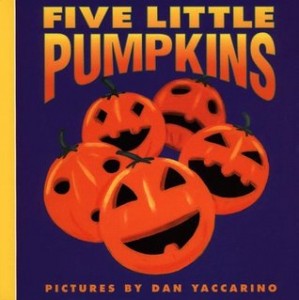
Five Little Pumpkins, illustrated by Dan Yaccarino: The classic finger play in an illustrated boardbook. Perfect for toddlers!
Picture Books About Pumpkins – Preschool and Older
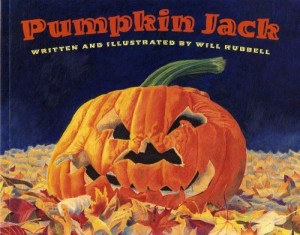
Pumpkin Jack by Will Hubbell: A lovely introduction to the life-cycle of a pumpkin for ages 3-6+. When a young boy needs to get rid of his rotting pumpkin, he places it in his family’s garden. By the time the next Halloween comes around, he has a delightful surprise waiting for him. The lush illustrations will captivate toddlers through young elementary students and preschoolers on up will learn about pumpkins, from seed to sprout, to flower, to pumpkin, to jack o’ lantern.
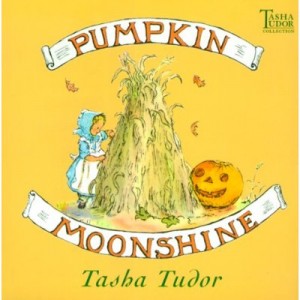
Pumpkin Moonshine by Tasha Tudor: My children find this classic tale, for ages 4-8 but really suitable even for older toddlers, absolutely hysterical. Sweet but resourceful and adventurous little Sylvie visits her grandparents’ farm and decides to select a pumpkin for a “pumpkin moonshine” (a jack o’ lantern for us modern readers). When she tries to roll the large gourd down the hill, it gets away from her, causing all sorts of mischief. When the pumpkin finally comes to rest, she shares a nice bonding moment with her grandfather, carving the face and then spooking the neighbors with their creation. The sweet original illustrations hearken back to a time of simple childhood pleasures.
Picture Books About Pumpkins – Kindergarten and Early Elementary School
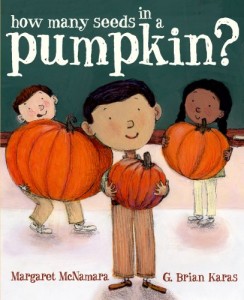
How Many Seeds in a Pumpkin? by Margaret McNamara: This book has a fun lesson about mathematics for ages 4-8, plus some scientific information about pumpkins, all wrapped up in a sweet story about how sometimes there is a lot inside a small package. A teacher asks his class to guess how many seeds are in a small, medium, and large pumpkin. The answer surprises the class and shows them that you cannot always judge by appearances.
Educational Connections
- Science: Read about the life cycle of the pumpkin. Use photographs to make a chart.
- Mathematics: Carve your own pumpkin and skip-count the seeds. How do the lines on the outside of a pumpkin reveal how many seeds are inside?
- History and Culture: Research the history of the pumpkin, use by Native Americans, and how the pumpkin came to be associated with Halloween and Thanksgiving.
- Home Arts: Find out about the nutritional benefits of pumpkin and then try to make a few pumpkin treats!
Sharing this at:
Check out more great Story + ART at stART!

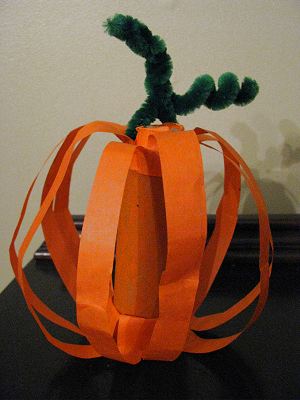
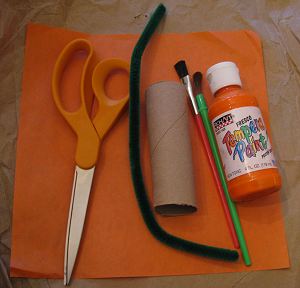
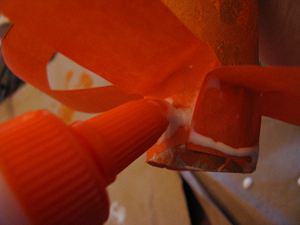
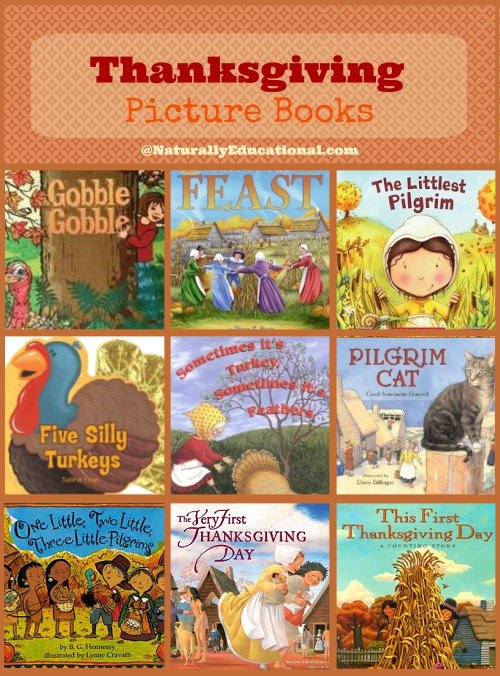
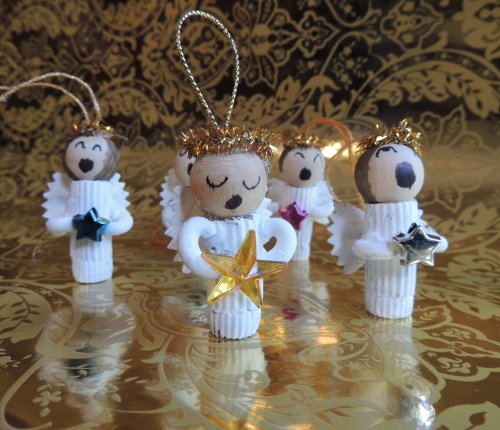
I would wear this dress with a pair of black open toed sling back high heels, a gold skinny belt, a small gold v intage handbag, and a gold vintage necklace and braclet. I would wear my hair down with some natural curls and my makeup would be very natural with a focus on acutctnaeing my blue eyes and long lashes